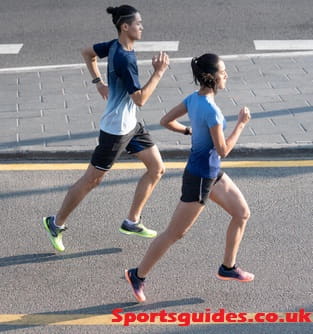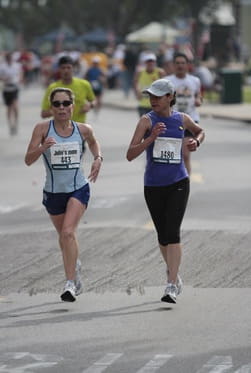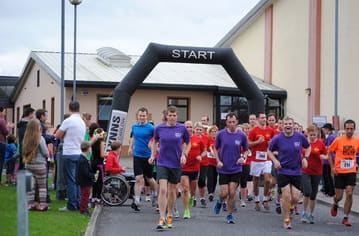
Maintaining a steady running speed for a long run is a result of consistent practising and training. If your running speed is unstable and slow, it is advisable to look at some different methods to improve it.
So, how to run faster and longer? Are you curious about the training process to do so? If yes, let’s get right into this post to check it out!
Contents
How to Run Faster and Longer?
Here are some tips on how to run faster and longer:
1 – Warm-Up Slightly Before Running
Many people either underestimate warming up before running or do it poorly, leading to getting tired easily. As you may not know, when you first start to run, your muscles’ oxygen needs skyrocket, but your response time or ‘oxygen kinetics’ determines the time it takes to allow the entire of your body to adapt.
As a result of the oxygen deficiency, signals are sent out that raise your heart rate and quicken your breath. Your muscles will acquire sufficient oxygen in around two or three minutes, which is enough time for others to run faster than you.
In order to counteract this first oxygen shortage, please make sure that you prelude around 15 minutes before running, consisting of a steady burst of vigorous running. For instance, do at least one minute at your 5k race pace.
The answer to how to run for longer is to do an appropriate warm-up, which is the first thing to maintain a regular breathing pattern and run for longer periods.

Doing a warm-up before running.
2 – Starting Weight and Interval Training
- Weight Training
Besides practising running outside, runners should spend time strength training or weight lifting to help you improve your form, run quicker, or even prevent injuries.
The first exercise to improve your sprint speed and power during weight training is bodyweight or explosive plyometric movements like leaping squats or lunges.
Lifting heavy weights with barbells, dumbbells, or kettlebells, on the other hand, can help distance runners maintain power, good technique, and efficiencies throughout longer runs like a 10k or half marathon.
Strength training enhances time trial performance by 3% to 5% for those running one to two miles and 2% to 4% for those running three to six miles.

Weight training for runners
- Interval Training
Apart from warm-up, interval training can also keep your first and last interval at the same speed. It is one of the best running workout types in which you substitute between intense and short bursts of running and short periods of rest.
Many experts suggest that you should do intervals only once a week if you are a newbie. Interval training bursts can be timed or measured by distance. More specifically, here are two types of interval training sessions for running on a track:
- On a track, sprint around 100m straightaways while walking or lightly jogging the 100m curves. Reiterate this process four times around the track for a total of eight sprints.
- Take a one-minute break after running for two minutes and do it the same four times.
3 – Practising Pacing
Many people believe that they can push themselves as hard as they want without experiencing discomfort or exhaustion. In case you run very fast and do not exercise proper pacing during running, you will easily get hurt.
Moreover, if you push yourself too hard initially, you will get tired and reach your limits earlier than you expected in a race. Hence, pacing yourself throughout training can help you to avoid exhaustion during the race.
Calculate your run’s target time, then break it down into minutes per mile or kilometre, whichever you prefer. In reality, there are numerous ways to keep you going, such as pace calculators that allow you to enter information like distance and goal race time to calculate your pace.
For instance, to complete a first half marathon in under two hours, you will need to run at a speed of 9.09 minutes per mile. Maintaining a consistent speed during your run is the key to efficient pacing.
Remember that do not try to run quicker at the beginning of the race once you are particularly feeling energized. A steady pace ensures that you have enough energy and oxygen reserves to finish the marathon.

Practising pacing
4 – Train Your Mind
Many runners have the same feeling that when they are getting close to the finish line, their bodies will start to ache everywhere. Rather than pushing a little firmer through those important miles, you should slow down and maintain your speed during your run to make the last few miles more tolerable.
Regardless of the race distance, surely every runner has struggled between keeping up or quitting. Once you start feeling fatigued, it negatively impacts your mental state, which affects your race effort.
Therefore, you have to understand and train your brain with a can-do attitude. Do not let yourself rush at the beginning and slow down in the end.
5 – Join A Running Club
Joining a running club is a great way to encourage and motivate yourself on how to run faster. When you train with others, you will unconsciously follow the group’s pace not to be left behind. Following the crowd will boost your motivation and maintain a steady pace.
You should choose a club that has the same purpose and running target to try and practice together.

Joining a running club
Conclusion
Maintaining a consistent speed for a long run is not easy at all. You have to challenge yourself through many training sessions to improve your speed.
With our article on how to run faster and longer, we hope you will quickly find a suitable and effective method to practice and enhance your running skill. Thank you for reading, and see you in our next post!





